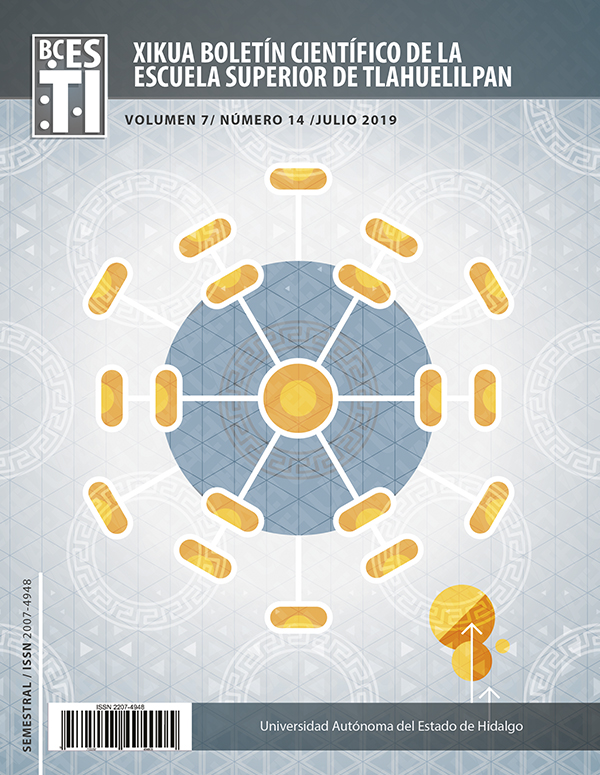The Design and construction of a mechatronic device for occupational therapy for children
Abstract
In this work, a mechatronic system is designed and built to help children with some motor disability of the upper extremity (arm) focused on occupational therapies. This device is channeled to children so it is built in a simple and attractive way so that the infant always has interest in carrying out their therapies, without leaving aside that the team must fulfill the main objective of rehabilitation. A team for occupational therapies is designed due to the lack of mechanisms that help the therapist in the realization of their rehabilitation sessions and at the same time motivate the patient in this case the child to perform the therapy. The design is made in CAD software such as Solidworks and is built with soft and resistant material so as not to damage the infant. In addition, an LED game is added to the device to make it more attractive and interesting to the child. This experimental rehabilitation team was tested in a rehabilitation center for children with motor problems and the response of the infants was successful. To carry out this work, the therapists and the support of the children's moms were always enthusiastically received.
Downloads
References
Bissolotti, L., Villafañe, J., Gaffurini, P., Orizio, C., Valdes, K., Negrini, S. (2016). Changes in skeletal muscle perfusion and spasticity in patients with poststroke hemiparesis treated by robotic assistance (Gloreha) of the hand. Journal of Physical Therapy Science. ISSN : 2187-5626.
Borboni, A., Mor, M. and Faglia, R. (2016). Gloreha—Hand Robotic Rehabilitation: Design, Mechanical Model, and Experiments. Journal of Dynamic Systems, Measurement, and Control. Vol. 138, Issue 11.
Brackenridge, J., Lynley, V., Sheila, L., Costi, J., Hobbs, D. (2016). A Review of Rehabilitation Devices to Promote Upper Limb Function Following Stroke. Neuroscience and Biomedical Engineering, Vol. 4, Num. 1, pp. 25-42(18). Bentham Science Publishers
Carmeli, E., Vatine, J., Peleg, S., Bartur, G., Elbo, E. (2009). Upper limb rehabilitation using augmented feedback: Impairment focused augmented feedback with HandTutor. Virtual Rehabilitation International Conference. DOI: 10.1109/ICVR.2009.5174258.
Chang, Ch., Lange, B., Zhang, M., Koenig, S., Requejo, P., Somboon, N. (2012). Towards pervasive physical rehabilitation using Microsoft Kinect. 6th International Conference on Pervasive Computing Technologies for Healthcare (PervasiveHealth) and Workshops.
Clark, L., Bryanta, A., Pua, Y., McCrory, P., Bennell, K., Hunt, M. (2010). Validity and reliability of the Nintendo Wii Balance Board for assessment of standing balance. Gait & Posture. Gait & Posture. ELSEVIER. Vol. 31, Issue 3, Pp 307-310
Connelly, L., Jia, Y., Toro, M., Stoykov, M., Kenyon, R., Kamper, D. (2010). A Pneumatic Glove and Immersive Virtual Reality Environment for Hand Rehabilitative Training After Stroke. IEEE Transactions on Neural Systems and Rehabilitation Engineering. Volume: 18 , Issue: 5. Pag. 551-559.
Coulter, J., Carter, H. (1946). How to Bring Benefits of Physical Medicine to Your Own Small Town. Physical Therapy, Vol. 26, Issue 2, March 1946, Pag. 75–77.
Gonzalo Dominguez M. (2014). Evaluabilidad de los programas del robot amadeo en la rehabilitación de la mano del hemipléjico. TOG (A Coruña). Vol. 11. Num. 20. ISSN 1885-527X.
Jakob, I., Kollreider, A. Germanotta, M., Benetti, F., Cruciani, A., Padua, L., Aprile, I. (2018). Robotic and Sensor Technology for Upper Limb Rehabilitation. Innovations Influencing Physical Medicine and Rehabilitation Innovations Influencing Physical Medicine and Rehabilitation. Vol. 10, Issue 9, Supplement 2, Pages S189-S197. PM&R. ELSEVIER.
Lange, B.; Koenig, S.; McConnell, E.,; Chang, Ch.; Juang, R.; Suma, E. (2012) Interactive game-based rehabilitation using the Microsoft Kinect. IEEE Virtual Reality Workshops (VRW). DOI: 10.1109/VR.2012.6180935.
Li, Z., Li, J., Guan, Y., Yi, K. (2009). Practice of Actual Project Driven Teaching Model on Software Engineering Major. International Conference on Information Engineering and Computer Science. ISBN: 978-1-4244-4994-1.
Lima, A., Ribeiro, I., Coimbra, L.,1 Dos Santos, M., De Andrade, E. (2006). Mecanoterapia e fortalecimento muscular: um embasamento seguro para um tratamento eficaz. Revista Saude.Com. Vol. 2. Issue 2. Pp. 143-152.
Peleg, S., Bartur, G., Elbo, E., Vatine, J. (2010). HandTutor enhanced hand rehabilitation after stroke — a pilot study. Physiotherapy Research International. https://doi.org/ 10.1002/pri.485
Phisiobasic. (2019) Mesa de Kanavel. [Online]. https://phisiobasic.com/producto/mesa-de-manos/ [Fecha de consulta: Abril, 2019].
Pilwon, H., Gwang, M., Soo-jin, L., Kyehan, R., Jung, K. (2012). Current hand exoskeleton technologies for rehabilitation and assistive engineering. International Journal of Precision Engineering and Manufacturing. Vol. 13, Issue 5, pp 807–824.
Popov, D., Gaponov, I., Jee-Hwan, R. (2017). Portable Exoskeleton Glove With Soft Structure for Hand Assistance in Activities of Daily Living. IEEE/ASME Transactions on Mechatronics. Vol. 22, Issue: 2. Pp. 865- 875. DOI: 10.1109/ TMECH. 2016.2641932.
Sarakoglou, I., Kousidou, S., Tsagarakis, N., and Caldwell, D. (2007). Exoskeleton-Based Exercisers for the Disabilities of the Upper Arm and Hand. Book Rehabilitation Robotics. ISBN 978-3-902613-04-2, pp.648. Itech Education and Publishing, Vienna, Austria.
TensMexico. (2019) Mesa de Kanavel. [Online]. http://www.tensmexico.com/downloads/11.MECANOTERAPIA.pdf [Fecha de consulta: Abril, 2019].
Young, W., Ferguson, S.,Brault, S., Craiga, C. (2011). Assessing and training standing balance in older adults: A novel approach using the ‘Nintendo Wii’ Balance Board. Gait & Posture. Gait & Posture. ELSEVIER. Vol. 33, Issue 2, Pp 303-305









